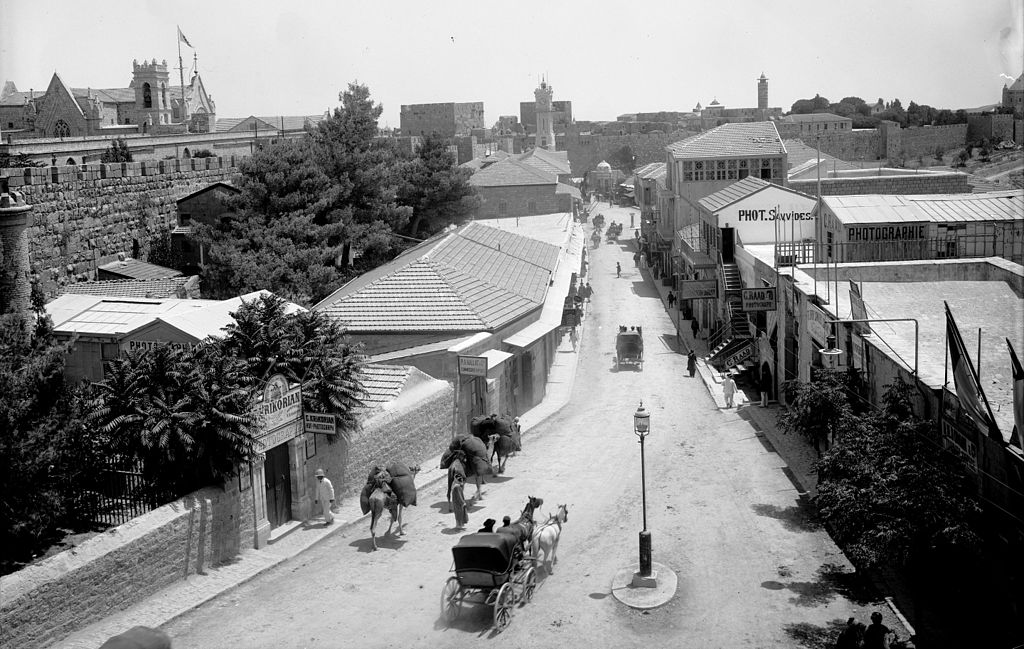Zionism inspired hundreds of thousands of Jews to immigrate to the Land of Israel and start building a national home there. But what happened to the Jews once they got to the Land of Israel? How do you even start building a state?
Keep on reading, and let’s find out!
Welcome back to the second part of the final chapter of our story.
It is 1897 CE. Theodor Herzl, the man, the legend, the vision, founds the Zionist movement and assembles the First Zionist Congress, in Basel, Switzerland.
Zionism and the Zionist ideology start to catch on.
A first wave of Jewish immigrants makes its way to the Land of Israel in 1882-1903. A second wave arrives in 1904-14.
It’s a good thing that the Jewish immigrants have such a strong ideology, for the conditions in the Land of Israel are abysmal.
In these years, the Land of Israel is controlled by the Ottoman Empire. And as you can guess, the Ottoman administration is not happy with all the Jews. In fact, it is both oppressive and hostile. As if this wasn’t enough, swamps bred deadly malaria and the soil is barren from centuries of neglect.
Talk about falling from cloud nine…

Land purchases are restricted by the Ottoman, and construction is banned without a special permit obtainable only in Istanbul (in modern day’s Turkey). Despite all of these obstacles, the Jewish pioneers reclaim barren fields, build new settlements and lay the foundations for what would become a thriving agricultural economy.
It takes more than a hostile administration and deadly disease to stop the Jews this time.
At the outbreak of World War I (1914), there are 85,000 Jewish people living in the Land of Israel, as compared to a mere 5,000 in the early 1500s. That’s a very impressive increase in population!
So the Ottoman is the last superpower to rule the Land of Israel?
No! Why? Because a new superpower rises in the Middle East! (And that’s the last time it happens in our story. I promise.)
In 1917, during World War I, the British Empire defeats the Ottoman and conquers the Land of Israel.
An incredibly important event happens in 1917. A milestone, you may say. The British Foreign Minister, Arthur James Balfour, pledges support for establishment of a “Jewish national home in Palestine” (Back then the Land of Israel was known as Palestine. Why? Check out chapter six to remember!). This is so important since Balfour’s pledge represents the first political recognition of Zionist aims by a Great Power. Hooray for Hertzl!
Both Zionism and the British sympathy with Jewish Zionist aspirations motivate more Jewish people all over Europe to immigrate to the Land of Israel.
Overall, about 250,000(!) Jews immigrate from Europe to Israel in 3 major waves.
The Jewish society flourishes once more
The British authorities grant the Jewish and Arab communities living in the Land of Israel the right to run their own internal affairs. And the Jews waste no time.
The Jews set up an administration to set and implement policies and programs; they set up a countrywide network of educational, religious, health, and social services; they expand the agriculture, establish factories, build new roads throughout the country; and even harness the waters of the Jordan River for production of electric power and develop the mineral potential of the Dead Sea. This is amazing work for a collection of immigrants who didn’t even speak the same languages!
However, if you read the previous chapters, you probably noticed a pattern. Jewish history is like waves. It has its ups and downs…
Tensions rise
While the Jews flourish, the Arab community is not pleased. The Arab nationalists oppose the Jewish national revival. This resentment erupts as violence.
There are 5 main periods of intense violence between 1920-1939. During these periods, the Arabs launch unprovoked attacks against the Jewish population, including attacks on Jewish transports, and burning of fields and forests. Two of the more notorious attacks are the 1929 Hebron massacre and the 1929 Safed massacre, where the Arabs went from door to door, broke in and massacred Jewish men, women and children – inside their homes, in their rooms, in their beds. About 100 unarmed Jews were murdered, and dozens more were maimed.

Early in the Zionist endeavor there were attempts to reach a dialogue with the Arabs, but they were unsuccessful. This put Zionism and Arab nationalism into a potentially explosive situation.
The British do not want this headache. If they could, the Brits would have turned around the car and gone back home until the kids behaved themselves. Unfortunately for them, they were not in a car.
So, in 1937, the British recommend dividing the country into two states, one Jewish and one Arab. “If you can’t play along, you’ll play alone”.
Hold on a minute, buddy! Are you telling me that the whole talk about “two state solution” is over 80 years old?!?!?!
That’s right, my friend. It’s been around almost as long as sliced bread.
The Jewish leadership accepts the idea of partition and starts negotiating with the British government, in an effort to reformulate the various aspects of the proposal. In contrast, the Arabs are uncompromisingly against any partition plan.

A revolt breaks out! This time around, to shake things up, it is the Arabs that revolt.
Between 1936-1939 the Arabs revolt against the British administration. They demand independence as well as ending the policy of open-ended Jewish immigration and land purchases with the stated goal of establishing a “Jewish National Home”.
The result? The British succumb to the violence and publish The White Paper of 1939.
The paper calls for the establishment of a Jewish national home in an independent Palestinian state within 10 years. However, until then it limits Jewish immigration to 75,000 for five years (total, not per year) and restricts Jews from buying Arab land in all but 5% of the Land of Israel.
An extremely unfortunate side effect of the White Paper is that it denies European Jewry a place of refuge from Nazi persecution, sending millions to their deaths. Tragic, sad, unnecessary.
What do the Jews do when they see that they can’t rely on the British for protection?
How do they defend their brothers, in Israel and Europe?
And how come almost nothing interesting has happened for 1700 years, whereas the first 50 years of the 20th century take up three parts?
Find out in the last part of our story, in Chapter Seven – Z is for Zionism (part 3)!

